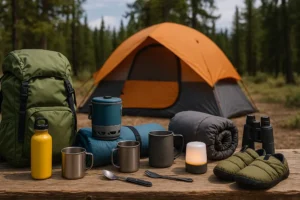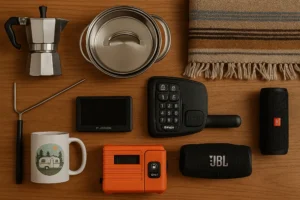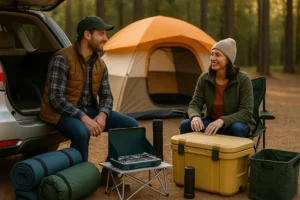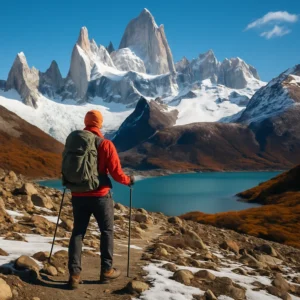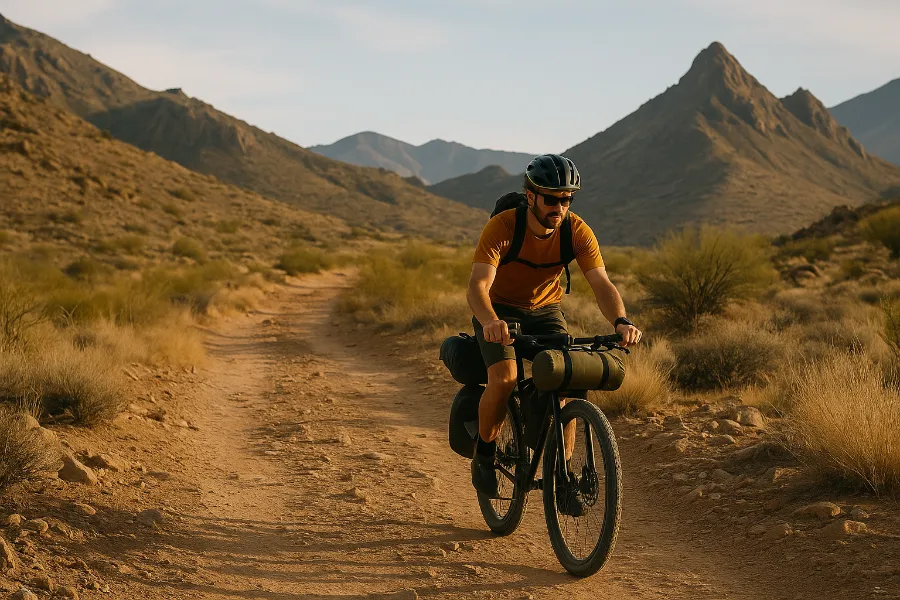
There’s one universal truth about pedaling long days in the saddle: you’ll always be hungry. That’s why bikepacking food is such a central part of every trip. Choosing the right meals and snacks can mean the difference between a smooth, energized ride and a bonk halfway through a climb. Let’s dig into the strategies, meal ideas, and practical tips that will keep you fueled and happy out on the trail.
Key Considerations Before Planning Bikepacking Food
Trip length
Short overnighters are easy—you can carry all your meals from the start. Longer routes require a balance between what you pack and where you can resupply.
Resupply options
Check your route ahead of time. Passing through towns daily? You can get away with lighter packs and more fresh food. Heading deep into the backcountry? You’ll need calorie-dense, non-perishable meals that last several days.
Stove vs. no stove
A stove gives you hot coffee and hearty dinners, but adds weight. If you want to travel light, no-cook options like tortillas, nut butters, and cold-soaked couscous can get you through.
Dietary needs
Vegetarian, vegan, gluten-free, or keto riders need extra planning. Remote convenience stores rarely have much variety, so packing specialty items or mailing food drops may be essential.
Packing space & weight
Even the hungriest rider can only carry so much. Focus on compact, calorie-dense foods and avoid bulky packaging. Repack items into ziplocks to save space.
Types of Bikepacking Food
Dehydrated and freeze-dried meals
Perfect for remote trips, these meals are lightweight and calorie-rich. Brands like Mountain House and Backpacker Pantry are popular, but making your own with a dehydrator can save money and pack in more nutrition.
Simple hot meals from resupply stores
- Ramen noodles with peanut butter and hot sauce
- Instant mashed potatoes with cheese and bacon bits
- Mac & cheese cups boosted with salami
- Instant rice or couscous with canned tuna or chicken
No-cook meals
- Tortillas with peanut butter and honey
- Cheese and salami wraps
- Tuna packets with crackers
- Cold-soaked couscous or ramen
Snacks and trail fuel
- Trail mix and dried fruit
- Jerky or meat sticks
- Energy bars or homemade granola bars
- Gummy candy or cookies for quick sugar boosts
- Nut butter packets for extra calories
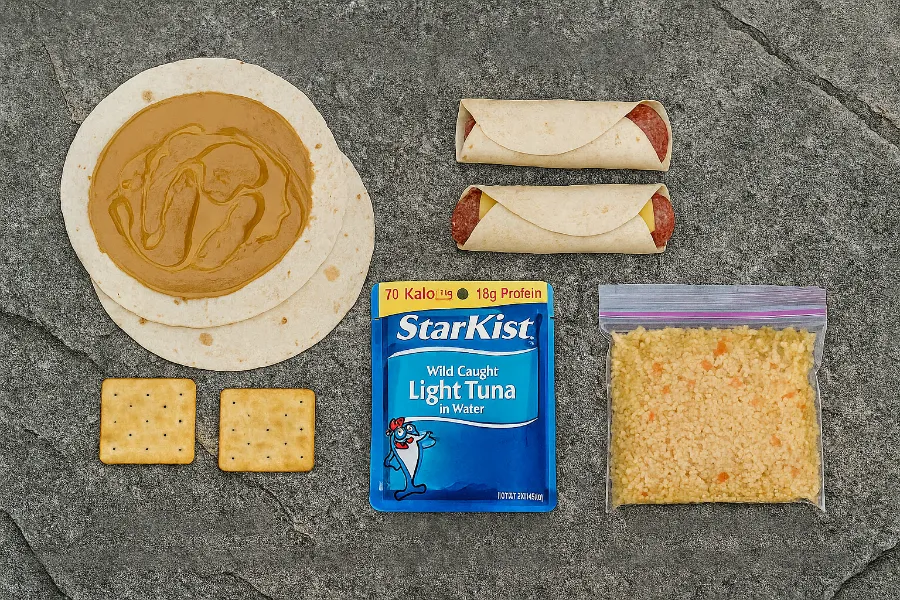
Healthy, Fresh, and Dietary Alternatives
Vegetarian & vegan options
- Nut butters, hummus, and bean dips
- Canned beans or veggie chili
- Trail mix with seeds and nuts
- Powdered coconut milk or olive oil packets for added fat
Low-carb approaches
- Cheese and jerky
- Nut-based energy bars
- Eggs (hard-boiled on short trips)
- Low-carb protein powders
Fresh foods
Some fresh items survive surprisingly well:
- Apples, oranges, and cucumbers last a couple days
- Bell peppers and avocados travel well if packed carefully
- Babybel cheeses hold up for a while
Practical Food Strategies
Meal planning
For short trips, pack each day’s meals in advance. For longer adventures, carry 1–2 days of food and plan to resupply as you go.
Portioning and calories
Expect to burn 3,000–6,000 calories per day. That’s more than you think. Pack calorie-dense items like nut butters, oils, and cheese to stretch your meals.
Budgeting
Gas station resupplies and freeze-dried meals can get expensive. Buying bulk ingredients and DIY dehydrating is cheaper for extended trips.
Condiments and extras
Never underestimate the morale boost of hot sauce, ketchup packets, or spice mixes. A simple ramen dinner feels gourmet with a little added flavor.
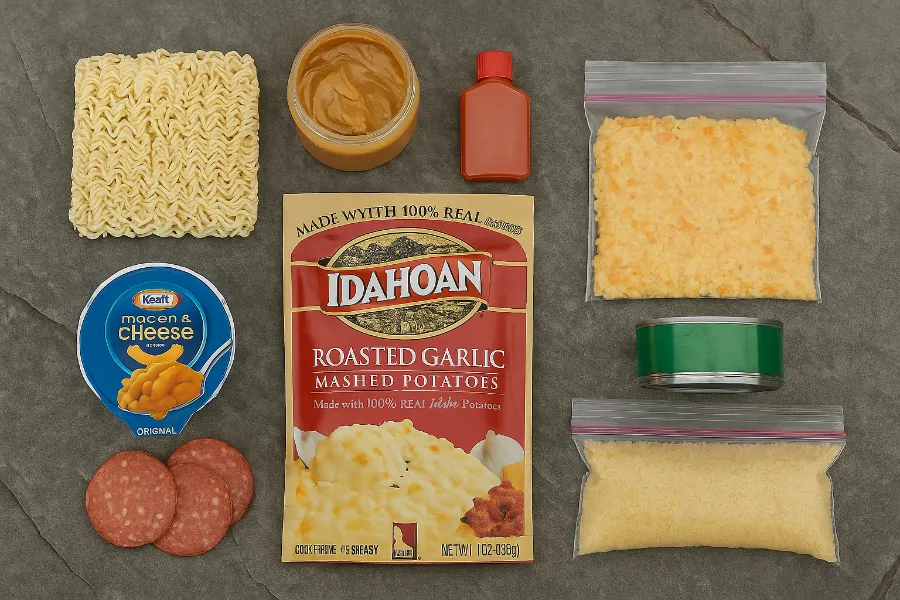
Carrying and Storing Bikepacking Food
- Stem/feed bags: perfect for snacks you want on the go
- Top tube bags: stash bars, trail mix, or fries (yes, really)
- Seat bags: best for bulky dinners and breakfasts
- Fork cages or dry sacks: heavier food items stored low
In bear country, practice safe food storage. Ursacks or proper bear hangs protect you and the wildlife. In rodent-prone areas, don’t leave food unattended—critters will find it.
Cooking & Eating Gear
- Stoves: small canister stoves like the MSR Pocket Rocket or efficient Jetboil systems are reliable choices
- Cookware: one small pot or mug is usually enough
- Utensils: a sturdy spoon or spork is essential
- Cold soaking jars: ultralight alternative for stoveless riders
Pro Tips & Creative Hacks
- Always pack emergency food—a few protein bars or a ramen packet can save the day.
- Repack bulky packaging into small ziplocks to save space.
- Freeze a burrito before your trip—it will thaw in your bag and make an excellent first-night dinner.
- Keep peanut butter handy. It turns any snack into a calorie-dense meal.
- Don’t forget a little comfort food: chocolate, cookies, or even a mini whiskey bottle can boost morale after a tough day.
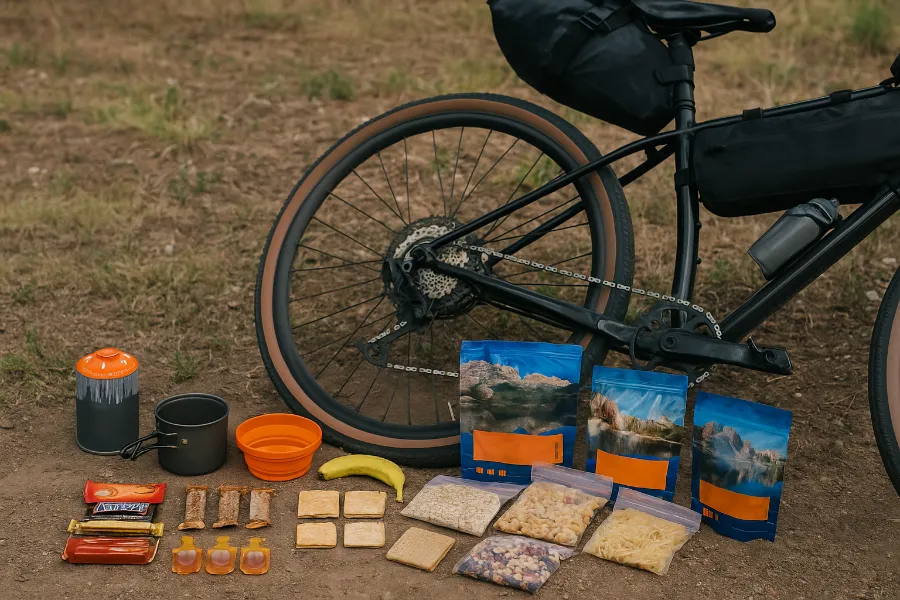
Conclusion
Bikepacking food doesn’t need to be complicated, but it does require some thought. Pack calorie-dense meals, snack often, and adapt your food plan to your route and resupply options. Whether you’re savoring mac & cheese at camp, munching on trail mix mid-climb, or cold-soaking couscous in a jar, the right fuel will keep your pedals turning. Plan well, eat often, and let your food be part of the adventure.




